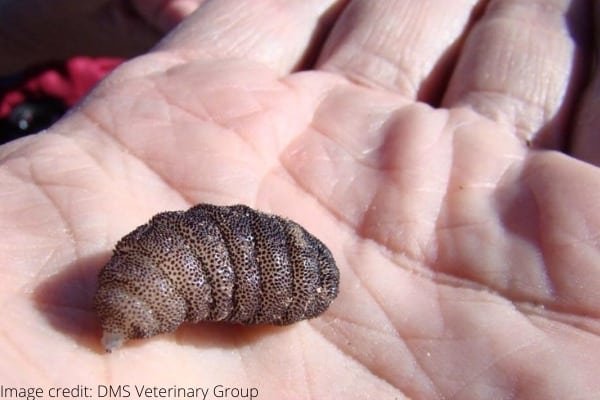
So, what exactly are wolf worms, and how do you know if your pet is infected? Think of wolf worms as unwelcome guests. They can cause discomfort and potential health issues for your pets. In this blog post, we’ll walk through everything you need to know about identifying wolf worms in outdoor pets—so you can spot them before they take over.
What Are Wolf Worms?
Wolf worms, scientifically known as **Cuterebra**, are the larvae of the botfly. They typically target small mammals, but your outdoor pets aren’t safe either. These larvae can infest your pet after they come into contact with the eggs laid by the adult botflies, usually in grassy or wooded areas. Once ingested or inhaled, the eggs hatch and the larvae make their way into your pet’s body, where they can create quite a bit of trouble.
Here’s the thing: wolf worms can start their life in a less-than-ideal way. They often make their way under the skin, creating a cyst-like area. Your pet might not show signs of discomfort right away, which can make it tricky for pet owners to spot an infestation until it gets worse.
Common Signs of Wolf Worm Infestation
You might be wondering how to recognize if your pet has a wolf worm infestation. Look out for some tell-tale signs that could indicate trouble:
- Swelling or lumps: Look for any unusual bumps or swelling on your pet’s skin.
- Excessive scratching: If you notice your pet scratching more than usual, particularly in a localized area, that could be a red flag.
- Foul odor: Some pets might develop a bad smell around the area where the worm is located.
- Behavior changes: If your pet becomes irritable or withdrawn, they might be feeling unwell due to discomfort.
Each of these symptoms can point to an infestation, but they might also be signs of other issues. That’s why it’s important to observe your pet closely and consult a vet if anything seems off.
How Wolf Worms Affect Pets
Once wolf worms are under your pet’s skin, they can cause a variety of health issues. For starters, they can create a painful and itchy infection in the area where they’re burrowing. Over time, this can lead to inflammation—basically, your pet’s body reacting to the foreign invader.
In some cases, if left untreated, a wolf worm infestation can lead to more severe complications. This includes the possibility of secondary infections or even organ damage if the larvae make their way deeper into the body. It’s a bit like a ticking time bomb: the longer you wait, the worse it can get.
Preventing Wolf Worm Infestation
Prevention is always better than cure, right? Keeping an eye on your pet while they’re playing outdoors is essential. Here are some handy tips to help prevent wolf worm infestations:
- Regular grooming: Brush your pets frequently, especially after outdoor activities. This can help catch any eggs or larvae before they cause a problem.
- Keep them on a leash: When walking your dog in areas known for wildlife, having them on a leash can reduce the chance of encountering botflies.
- Limit outdoor time: During peak seasons for botflies, consider limiting the time your pets spend outside.
By being proactive, you can significantly reduce the risk of wolf worm infestation in your pets.
What to Do If You Suspect an Infestation
If you notice any signs of a wolf worm infestation, don’t panic! The best course of action is to take your pet to the vet as soon as possible. Here’s what you can typically expect:
1. **Vet examination:** The vet will examine your pet, looking for swelling, lumps, or other signs.
2. **Diagnosis:** They might use imaging tools or take a sample of the cyst if necessary.
3. **Treatment:** If a wolf worm is confirmed, your vet will likely need to remove the larvae. This can involve a simple procedure, but it’s best handled by a professional.
Dealing with a wolf worm infestation isn’t pleasant, but with quick action, your pet can get the help they need.
Home Remedies and Cautions
While it might be tempting to try home remedies for treating wolf worms, it’s essential to exercise caution. Some natural treatments might provide relief for irritation or itching, but they won’t eliminate the infestation. Here are a few things to keep in mind:
– **Cleaning the area:** If there’s a visible wound, keep it clean to prevent infection. Saline solutions can help, but don’t go too far without vet advice.
– **Avoid manual extraction:** Trying to pull out the larvae yourself can cause more harm than good, leading to infection or further complications.
If you’re ever in doubt, consulting with your veterinarian is the safest approach.
Keeping your outdoor pets safe from wolf worms requires vigilance, awareness, and a little bit of knowledge. By knowing how to identify the signs of infestation and taking precautionary measures, you can protect your furry friends from these unwelcome parasites. Remember, if something seems off with your pet, it’s always best to consult a vet for guidance. Your pet deserves a safe, happy life, free from the worry of pesky parasites!
